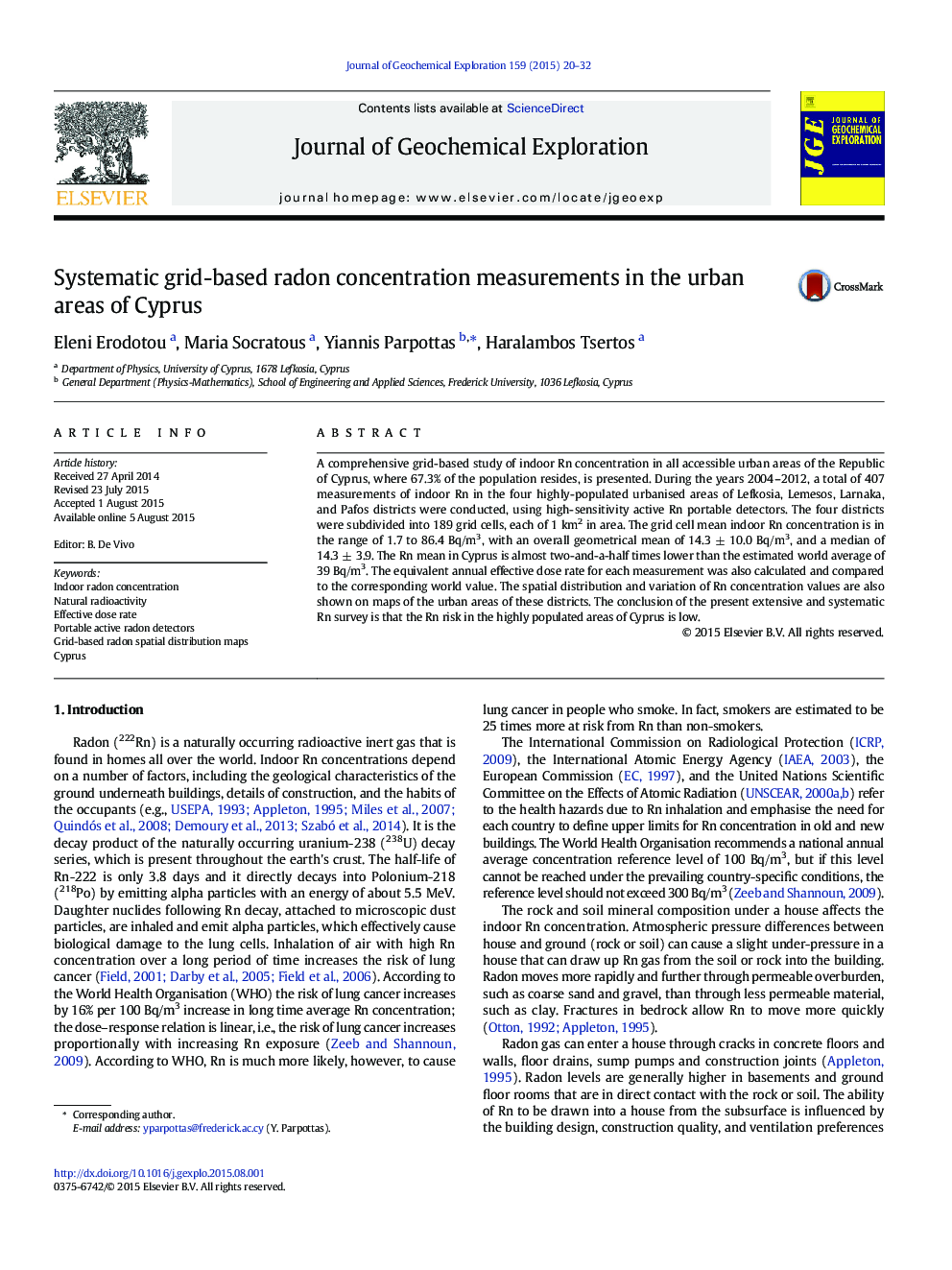| Article ID | Journal | Published Year | Pages | File Type |
|---|---|---|---|---|
| 4457046 | Journal of Geochemical Exploration | 2015 | 13 Pages |
•We conducted 407 grid-wise indoor radon concentration measurements.•The study covered 67% of the residential areas of Cyprus.•We calculated the effective dose rates due to radon inhalation.•We report the sites and radon concentration on maps.•There is no radon risk due to geological background and climatic conditions.
A comprehensive grid-based study of indoor Rn concentration in all accessible urban areas of the Republic of Cyprus, where 67.3% of the population resides, is presented. During the years 2004–2012, a total of 407 measurements of indoor Rn in the four highly-populated urbanised areas of Lefkosia, Lemesos, Larnaka, and Pafos districts were conducted, using high-sensitivity active Rn portable detectors. The four districts were subdivided into 189 grid cells, each of 1 km2 in area. The grid cell mean indoor Rn concentration is in the range of 1.7 to 86.4 Bq/m3, with an overall geometrical mean of 14.3 ± 10.0 Bq/m3, and a median of 14.3 ± 3.9. The Rn mean in Cyprus is almost two-and-a-half times lower than the estimated world average of 39 Bq/m3. The equivalent annual effective dose rate for each measurement was also calculated and compared to the corresponding world value. The spatial distribution and variation of Rn concentration values are also shown on maps of the urban areas of these districts. The conclusion of the present extensive and systematic Rn survey is that the Rn risk in the highly populated areas of Cyprus is low.
